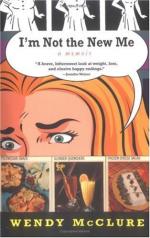Born in Guadeloupe January 10, 1760, coming to Paris when very young, he took the second prize of Rome in 1784, with a picture of such merit that the regulation was infringed and he was given leave to go to Rome at the same time as the winner of the first prize. His first picture was exhibited in the form of a sketch in the Salon of 1801; and not until eleven years after was the great canvas of Brutus Condemning his Sons to Death shown at the Salon of 1812. The other picture by which he is best known, the Death of Virginia, is, like the preceding, in the Louvre; and though the sketch of this was exhibited in 1795, the picture only took definite form in 1828.
[Illustration: THE ARRIVAL OF A DILIGENCE. FROM A PAINTING BY LOUIS-LEOPOLD BOILLY.
This picture, now in the Louvre, is the only example of this artist’s work shown there, and is particularly interesting as showing the Paris of 1803, when the streets had no sidewalks. The scene is laid at the place of arrival and departure of the coaches which from Paris penetrated into all parts of France, and were the only means of transport or communication.]
Meanwhile Lethiere had travelled much in England and Spain, and had been for ten years director of the French School of Fine Arts in Rome. His life was adventurous, and it is told of him that he was often involved in quarrels, and fought a number of duels with military officers because, humble civilian that he was, he yet dared to wear the mustache! In 1822 he returned definitely to Paris, where he was made a member of the Institute and professor in the School of Fine Arts, and where he died April 21, 1832. The quality of his work is well characterized by Charles Blanc, who writes of it “as producing the effect of a tragedy sombre and pathetic.”
The picture of the Burial of Atala, from Chateaubriand’s well-known story, is interesting as showing the methods of the David school applied to subjects of less heroic mould than the master and his disciples were wont to treat. Anne-Louis Girodet de Roucy Trioson, born at Montargis January 3, 1767, was one of the most convinced adherents of his master David; and while competing for the Prize of Rome, which he won in 1789, was accustomed each morning before beginning his work to station himself in front of David’s picture of the Horatii as before a shrine, invoking its happy influence. Such devotion received its official reward, and after five years spent in Rome his great (and tiresome) picture of the Deluge met with the greatest favor, and in 1810 was awarded the medal for the best historical picture produced in the preceding decade. The Burial of Atala, painted in 1808, is, however, a work of charm in composition and sentiment; and though in color it is dry and uninteresting, is not unworthy of the popularity which it has enjoyed from the vantage ground of the Louvre for more than four-score years. Girodet died in Paris, December 9, 1824, after having received all the official honors which France can award to a painter.




